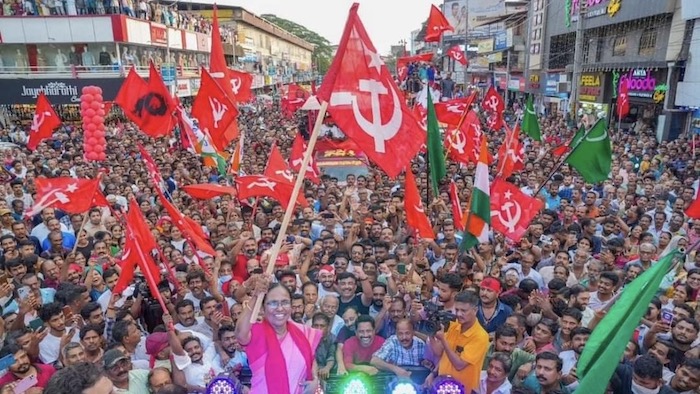India, the world’s most populous nation, is in the middle of its 18th national elections. Two of the eight phases are already over, sealing the fate of over one third of representatives. However, the fight is still on for the majority of the seats. The incumbent Narendra Modi-led right-wing government, seeking a third straight term, is facing an upbeat center and left alliance led by Congress.
This national election for India’s lower house of the parliament, called the Lok Sabha (the house of the people), is stretched between April 19 and June 1 and takes place in eight phases. The votes will be counted on June 4 and results will be declared on the same day.
India is a parliamentary democracy with the first past the poll system. It is divided into 543 constituencies for the national elections with each constituency electing a single member for the Lok Sabha each. The party or alliance which wins the majority of seats (272) in the Lok Sabha elects the prime minister and forms the central government.
Though India has a multiparty system, most of the parties this time are aligned with the two major pre-poll alliances seeking popular mandate. The ruling Bharatiya Janata Party (BJP) led right-wing National Democratic Alliance (NDA) and the Congress-led, center-left opposition, Indian National Developmental Inclusive Alliance (I.N.D.I.A.) or just INDIA.
All the major left parties are part of the INDIA alliance and are contesting a large number of seats in states of Kerala, West Bengal, Tamil Nadu, Bihar and elsewhere with an objective to increase the presence of the left in the Indian parliament.
Along with the national election, three states/provinces, Odisha, Andhra Pradesh in the country’s south-east, and Sikkim in the north-east, will also elect members of their respective state assemblies.
Key issues
Unlike the last national elections in India when Prime Minister Narendra Modi was able to use the popular polarization of votes around the issue of nationalism and national security, the present elections are largely being fought on the issue of his government’s failure on all major fronts affecting the majority of the population, principally economic issues such as price rises and unemployment.
Indians are facing an unprecedented rise in the prices of all major essential commodities which has, in the absence of corresponding rise in the income, created a major crisis of living for the majority of the households in the country but particularly among the urban poor. India has seen an unprecedented decline in its standing on the annual global hunger index despite being one of the major food producers in the world and world’s fastest growing economy.
The rising inequality and the growing perception of the Modi government being pro-big capital and allegations of cronyism have also become a major poll issue. Opposition parties have pointed out that while select corporate houses in the country have risen and made tremendous profits, it is at the cost of most of the small and medium sized enterprises in the country as well as public sector entities.
The International Labor Organization (ILO) report on rising unemployment among educated youth in India has also attracted the attention of major opposition parties and become a major poll issue.
Apart from the major economic issues, the opposition has raised the issue of alleged threats to democracy under the BJP rule. They have accused BJP of trying to suppress the voices of dissent by misusing the central law enforcement agencies. Several opposition leaders such as sitting chief minister of Delhi, Arvind Kejriwal, and former chief minister of Jharkhand, Hemant Soren, were arrested in allegedly trumped up corruption charges. BJP has also been accused of intimidating opposition leaders to switch sides using the threats of persecution or by offering them money.
BJP and NDA have rejected most of the claims made by the opposition and instead accused INDIA alliance partners of being corrupt. The right-wing alliance has also declared that the INDIA alliance and particularly Congress is against the interest of the majority community in the country. It has sought the third term by also claiming it has been able to keep the Indian economy afloat amidst the challenges of COVID-19 and global recession.
Uncertain predictions
In the last elections in May 2019, the BJP-led NDA won 353 seats. BJP alone scored over 37% of votes and over 300 seats. It now seeks an over two-third majority in the ongoing elections with a slogan of “abki baar, 400 paar” (More than 400 seats in this election). While most of the pre-poll surveys predict a comfortable win for the NDA, the opposition has rejected those surveyed as compromised and claimed that the NDA will not get a majority.
There are over 970 million eligible voters in the country of over 1.4 billion according to the Election Commission of India (ECI). A significant number of them are first time voters who are facing the challenges of unemployment and price increases, and the opposition is hoping they will vote for their agenda which promises more jobs and increased social spending.
The left and other constituents of the INDIA alliance also believe that the most important factor in the revival of the opposition’s fate would be the farmers and workers who have faced complete neglect during the BJP rule in the last decade and even faced state repression during the months-long farmers’ agitation at Delhi’s borders and during the COVID-19 lockdowns.
The opposition also believes that there is growing disenchantment among Dalits and other marginalized sections of the Indian society from the Narendra Modi government as there is a growing threat to affirmative action and social justice policy measures enshrined in the Indian constitution due to BJP’s aggressive pro-corporate and pro-market orientation.
Will the BJP-led NDA fall under the weight of its own contradictions as the center-left alliance predicts, or will the BJP’s pro-corporate politics prevail? On June 4, the world will find out.





